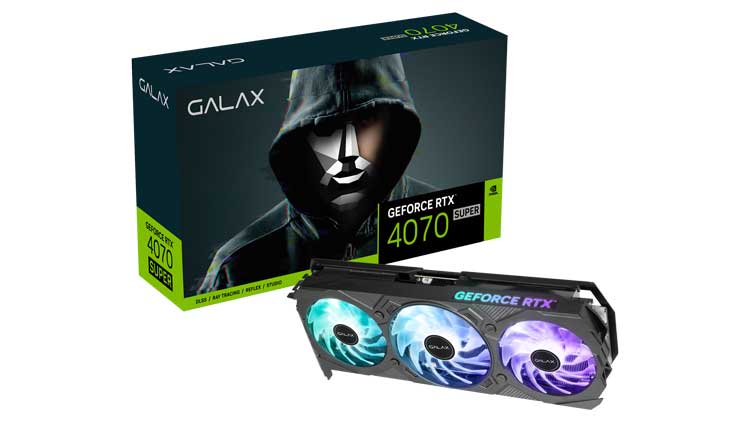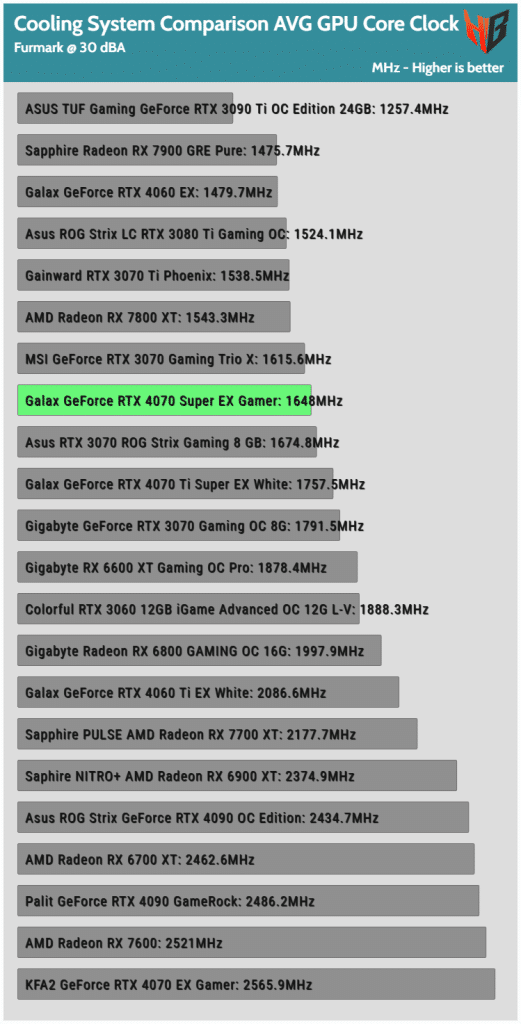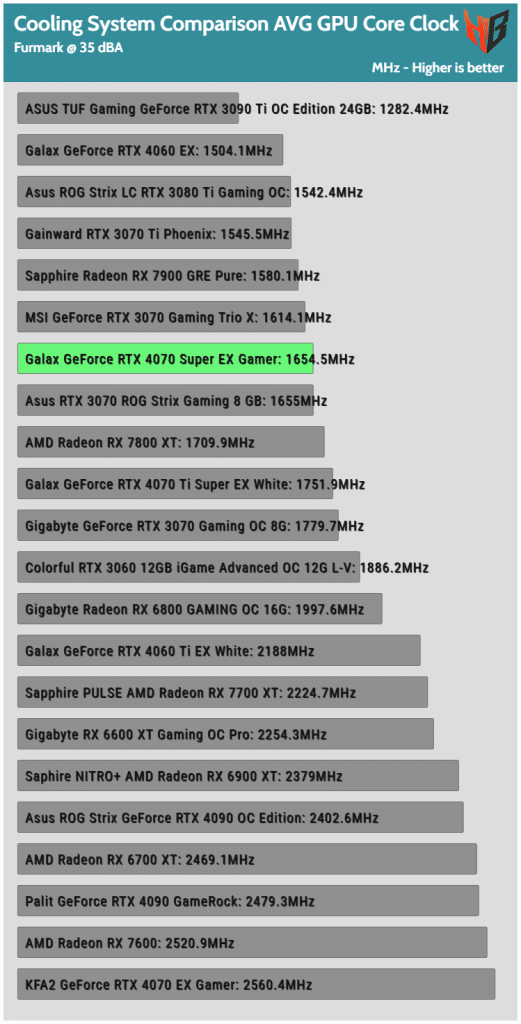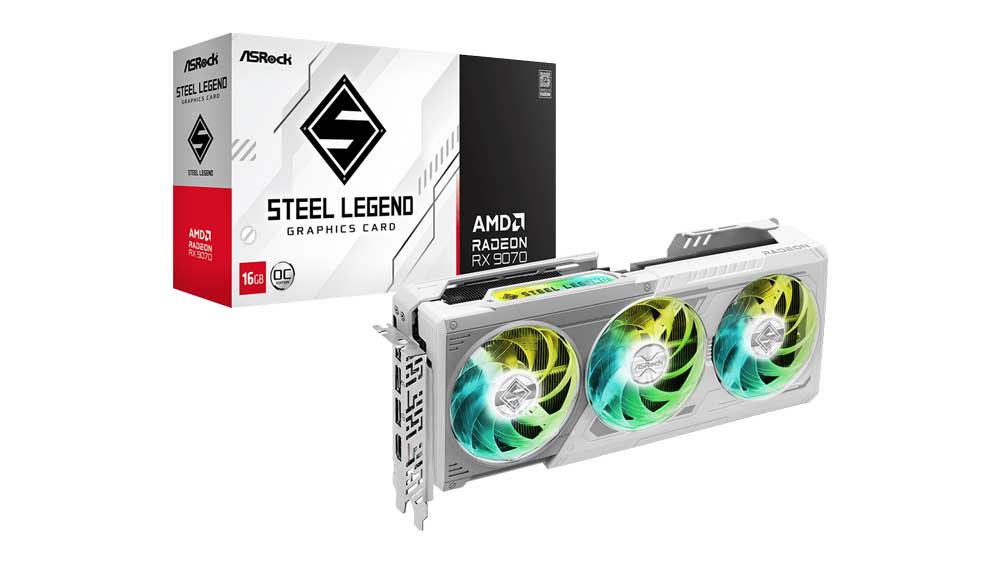Cooling System Performance
Operating Temperatures
The cooling system does a good job, as you can see in the charts above, but to get the complete picture, we have to look at the GPU clocks, too.
GPU Core Clock (AVG)
The GPU clocks drop low, helping the cooling system to keep temperatures and output noise low.
Pages:
- Prologue & Technical specifications
- NVIDIA’s Key Technologies
- Box & Contents
- Part Analysis
- Specifications Comparison
- Test System
- Game Benchmark Details
- Raster Performance
- RT Performance
- RT Performance + DLSS/FSR Balanced
- Raytracing Performance + DLSS/FSR Balanced + FG
- DLSS/FSR Balanced (No RT)
- DLSS/FSR Balanced + FG (No RT)
- Relative Perf & Perf Per Watt (Raster)
- Relative Perf & Perf Per Watt (Raster + DLSS/FSR)
- Relative Perf & Perf Per Watt (RT)
- Relative Perf & Perf Per Watt (RT + DLSS/FSR)
- Relative Perf & Perf Per Watt (RT + DLSS/FSR + FG)
- Rendering Performance
- Operating Temperatures
- Operating Noise & Frequency Analysis
- Power Consumption
- Clock Speeds & Overclocking
- Cooling Performance
- Epilogue







Since it looks like the 40 super series uses the new 12v-2×6 headers, does this mean that ATX 3.0 psus using 12vhpwr won’t have that burning issue? Thanks for all you do.
Nope, there won’t be a problem with ATX v3.0 PSUs because the cable remains exactly the same, and on the PSU side, there weren’t any notable issues.
Thank you for the reply! I’ve been unnecessarily stressed because I got a 4080 super FE and was worried about fire thing as this is my first pc build.